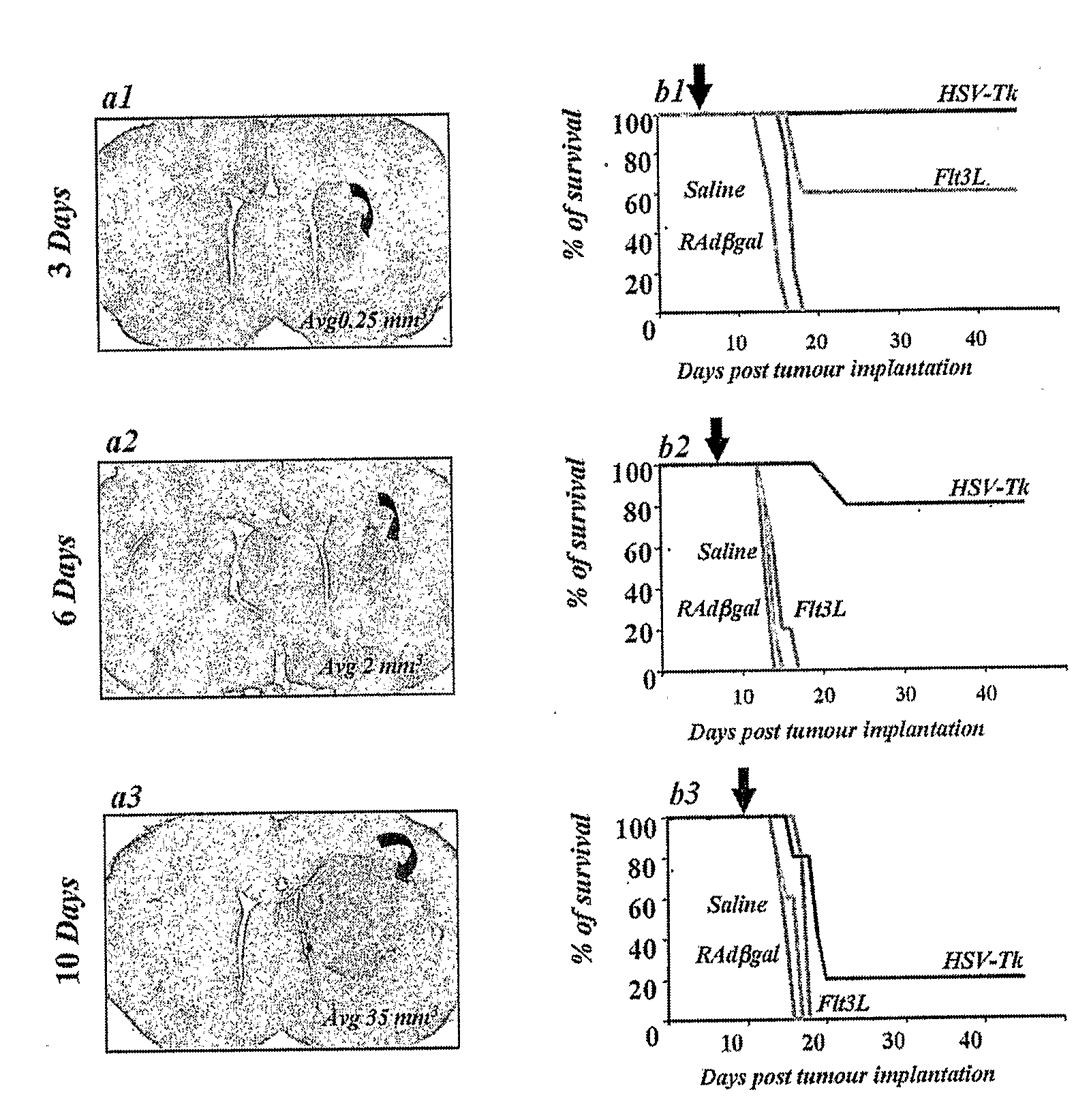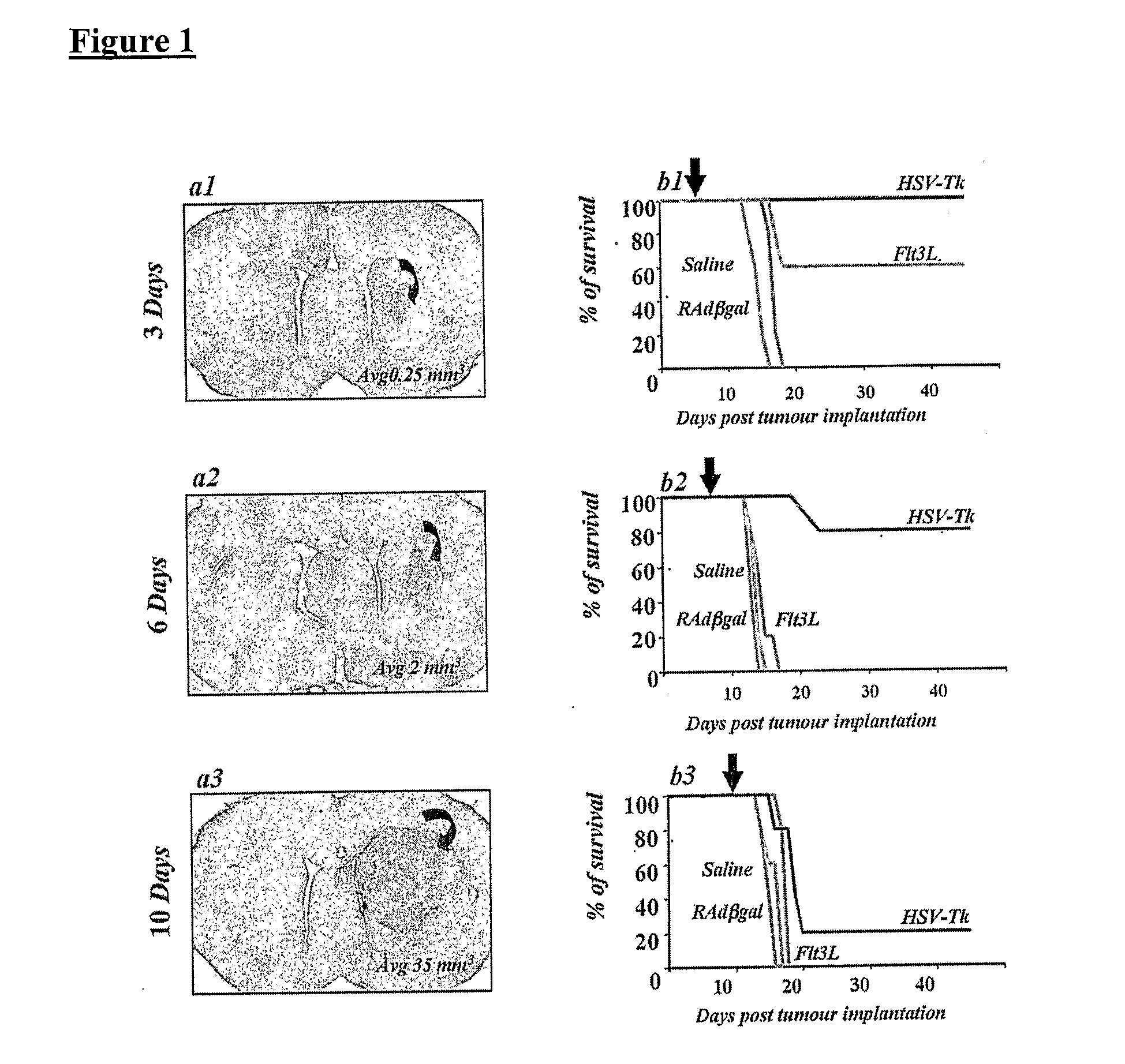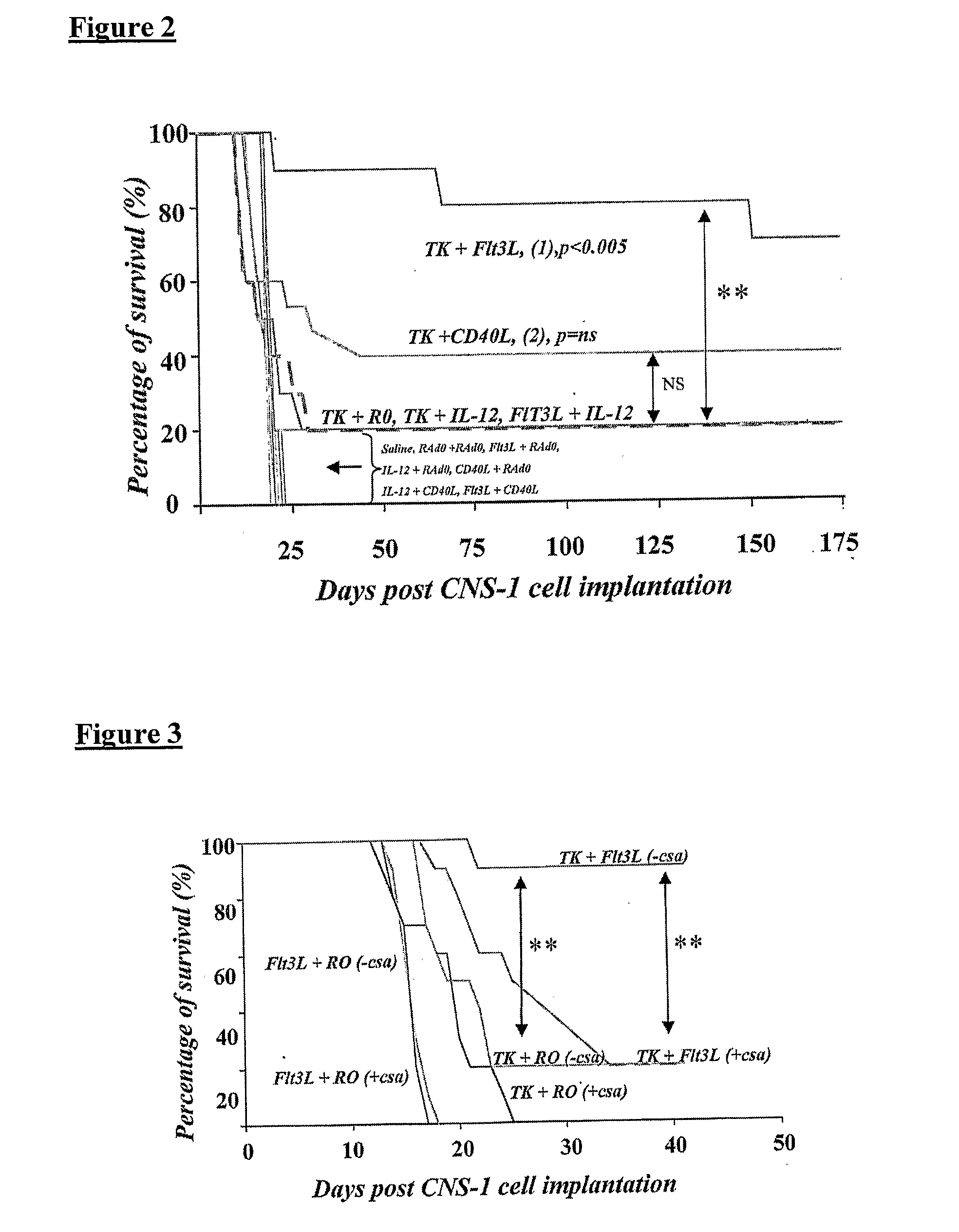Combined Gene Therapy for the Treatment of Macroscopic Gliomas
a technology of macroscopic gliomas and gene therapy, applied in the field of cancer, can solve the problems of affecting the treatment effect of macroscopic gliomas, the inability to accurately reflect large human tumors in brain tumor models used experimentally, and the relatively rapid and unequivocal evaluation of new therapies for this diseas
- Summary
- Abstract
- Description
- Claims
- Application Information
AI Technical Summary
Benefits of technology
Problems solved by technology
Method used
Image
Examples
example 1
Adenoviral Vectors
Production and Testing of Biological Activities
[0073]RAd Flt3-L (expressing Fms-like tyrosine kinase ligand), RAd 35 (expressing β-galactosidase), RAdTK (expressing HSV-TK), RAd-CD40L, and RAd-IL12 were produced and tested in accordance with various embodiments of the present invention.
[0074]RAds were first generation replication defective recombinant adenovirus type 5 vectors expressing the transgenes under the transcriptional control of the human cytomegalovirus intermediate early promoter within the E1 region. RAd 35, an adenovirus encoding LacZ under the control of the hCMV promoter was originally described by Wilkinson & Akrigg [Wilkinson, G. W. et al., Constitutive and enhanced expression from the CMV major IE promoter in a defective adenovirus vector, Nucleic Acids Res, 20:2233-9 (1992)] and has been used previously by the inventors [Dewey, R A. et al., Chronic brain inflammation and persistent herpes simplex virus 1 thymidine kinase expression in survivors ...
example 2
Animal Models
Macroscopic Tumor Model
[0077]Male Lewis rats (225-250 g in body weight) were anaesthetized with halothane and placed in a stereotaxic frame that had been modified for use with inhalational anesthesia [Thomas, C. F. et al., Acute direct adenoviral vector cytotoxicity and chronic, but not acute, inflammatory responses correlate with decreased vector-mediated transgene expression in the brain, Mol Ther, 3:36-46 (2001)]. Animals were injected in the left striatum (1 mm forward from bregma, 3 mm lateral and ventral 4 mm from the dura) with 5×103 CNS1 cells [Dewey, R A. et al., Chronic brain inflammation and persistent herpes simplex virus 1 thymidine kinase expression in survivors of syngeneic glioma treated by adenovirus-mediated gene therapy: implications for clinical trials, Nat Med, 5:1256-63 (1999)]. The cells were administered in a volume of 3 ml using a 10 ml-hamilton syringe. For each injection a small pocket was created before the deposition of cells in the striatum...
example 3
Large Tumor Model
[0078]Male Lewis rats (225-250 g in body weight) were injected in the left striatum (1 mm forward from bregma, 3 mm lateral and ventral 4 mm from the dura) with 5×103 CNS1 cells as described above. Doses of 8×107 i.u of either RAdTK (RAd128) or RAdFlt3L were injected intratumorally 3 days, 6 days and 10 days post tumor implantation, in order to determine at which time point post tumor implantation these treatments would fail (i.e., animals would die within 30 days). Animals were monitored daily, and animals showing morbidity were perfused-fixed and the brains removed for histological examination. Simultaneously, to determine the size of tumours at the time of treatment, animals were perfused fixed 3 days, 6 days and 10 days post CNS1 implantation. 40 mm-thick serial brain sections were cut using a vibrotome. The section in which the tumor fills the largest area of the striatum was used for the calculation of tumor size. To determine the size of the tumors at each po...
PUM
| Property | Measurement | Unit |
|---|---|---|
| Pharmaceutically acceptable | aaaaa | aaaaa |
Abstract
Description
Claims
Application Information
 Login to View More
Login to View More - R&D
- Intellectual Property
- Life Sciences
- Materials
- Tech Scout
- Unparalleled Data Quality
- Higher Quality Content
- 60% Fewer Hallucinations
Browse by: Latest US Patents, China's latest patents, Technical Efficacy Thesaurus, Application Domain, Technology Topic, Popular Technical Reports.
© 2025 PatSnap. All rights reserved.Legal|Privacy policy|Modern Slavery Act Transparency Statement|Sitemap|About US| Contact US: help@patsnap.com



